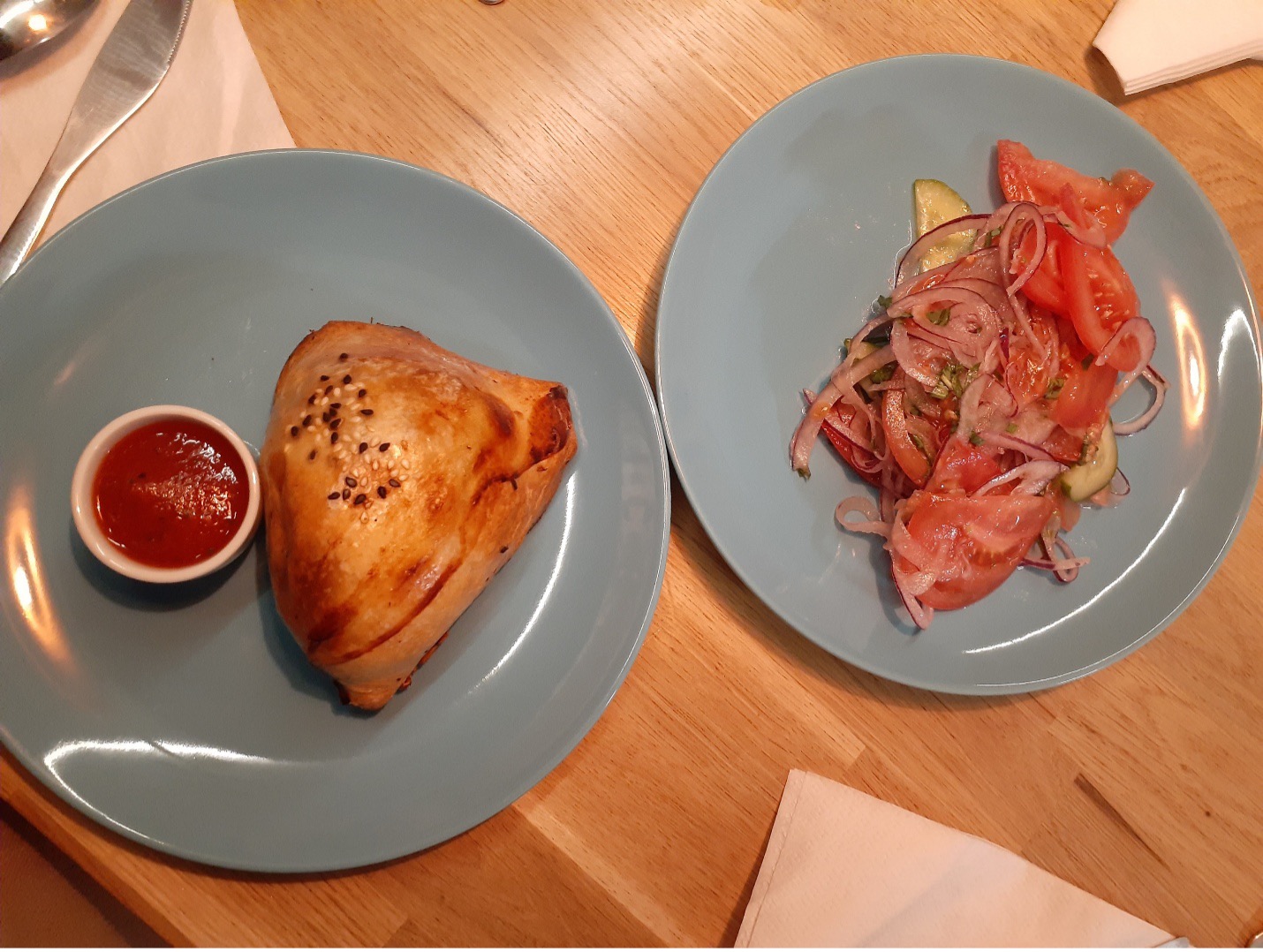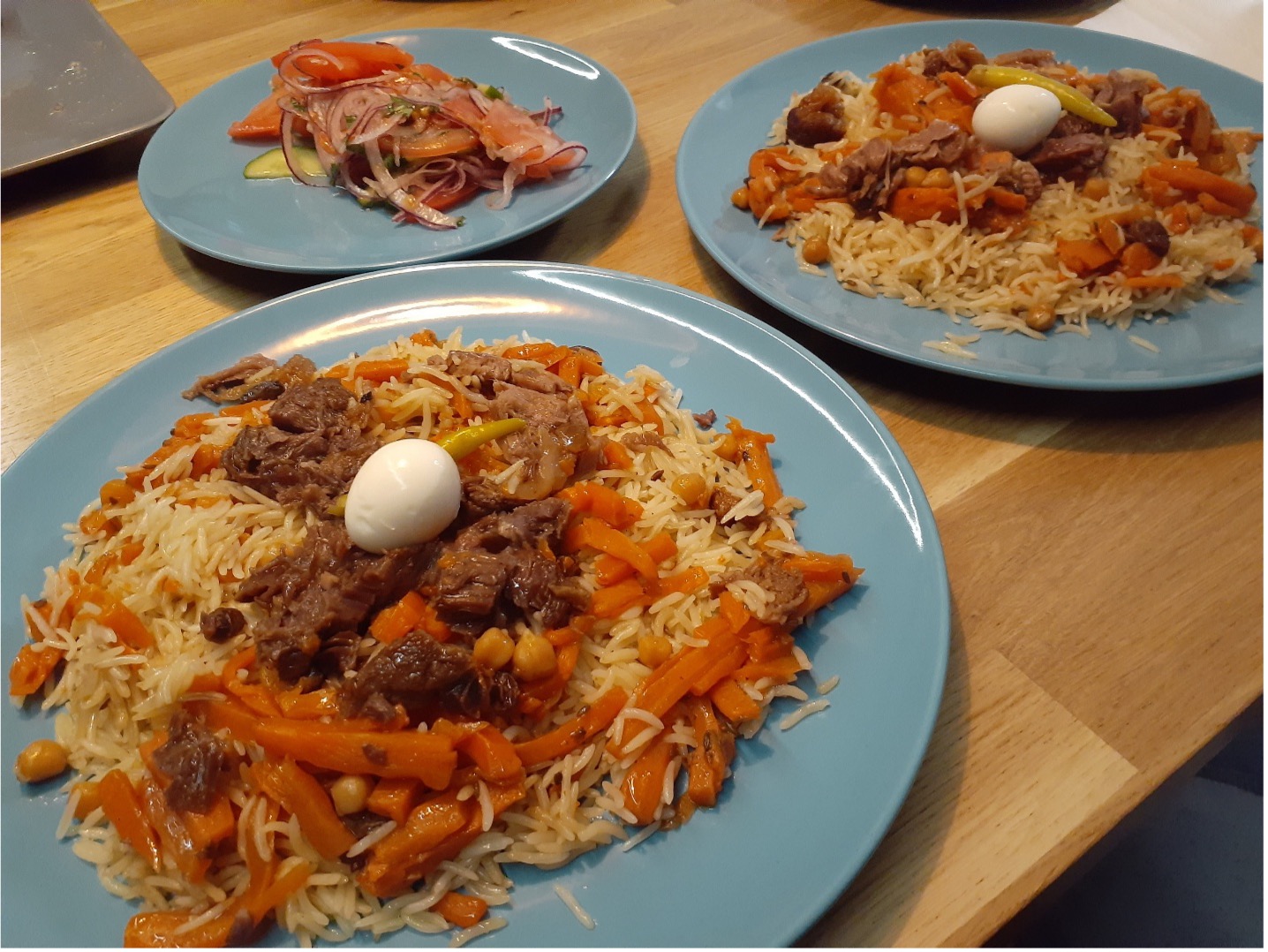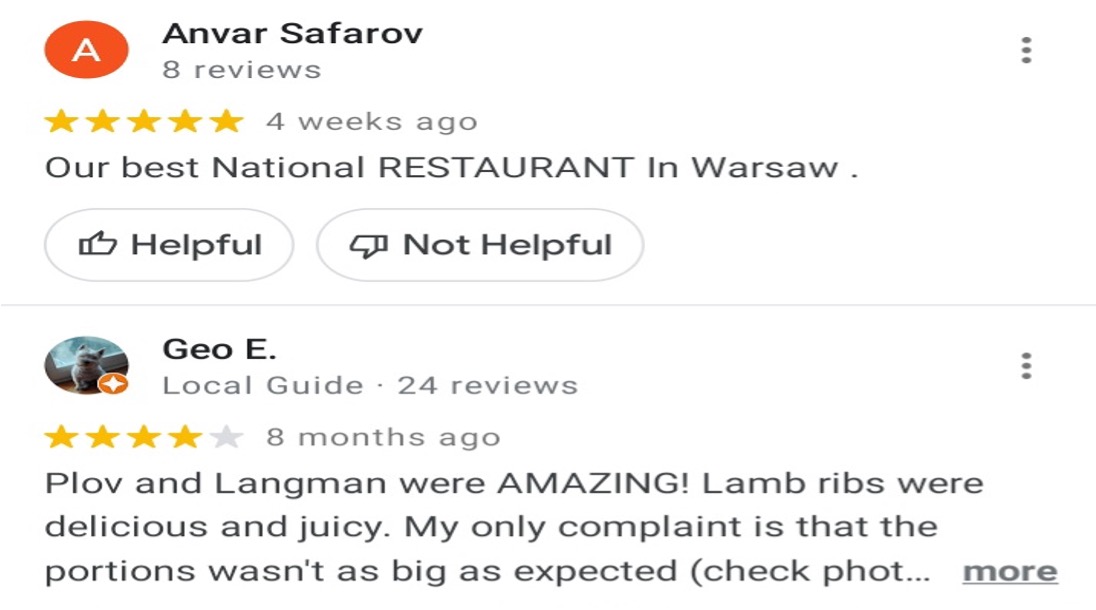“Our goal is to not only share our food but also our uzbek culture and tradition through our dishes”
Shavkat Nasriddinov, chef and restauranteur
Perhaps you’ve already heard of a country called Uzbekistan or it’s well known cities like Khiva, Bukhara and Samarkand. However, very little people know about traditional uzbek dishes and how heavenly they taste. Today we shall not only discover uzbek national cuisine, but also tour the Samarkand – an uzbek restaurant in Warsaw, where we will have an opportunity to talk to our interviewee and the owner of the restaurant, Shavkat Nasriddinov. In addition to that, get ready to receive a special recipe for an extraordinary Plaf (Uzbekistan’s signature meal, considered as UNESCO dish) directly from the Chef himself. So, let’s get into it, shall we?
Uzbekistan’s culinary tradition is influenced by the other former Silk Road countries all over Asia and the Middle East. One thing you must know about uzbek food is that it’s heavy, hearty and heavenly. It primarily relies on meat and other basic ingredients such as fresh vegetables, flour, grains, herbs, oil and different spices. There is a great variety of uzbek food but below is the list of the most popular dishes as well as my absolute favourites that will surely blow your mind once you give them a try. Also, Some “fun facts” about them will be mentioned.
• Norin: it’s one of the top meals, made up of thick handmade noodles, boiled horse meat, black pepper to spice it up and sliced onions on top to make it extra delicious.
• Somsa: crispy and golden-brown pastries usually filled with juicy and perfectly spiced beef (beef can be replaced with lamb or chicken accompanied by cheese or with veggies like potatoes or pumpkin) and onions. They are baked inside a big clay oven called tandoor. Somsas have different varieties and shapes – they can be round, teardrop-shaped as well as rectangular and are usually topped with sesame seeds. When tried with some tomato sauce with black and red pepper as well as chopped parsley and dill, they are absolutely next level.
 Samsa with tomato sauce next to the salad called “Achik Chuchuk” at “ Restauracja uzbecka Samarkand”, Warsaw.
Samsa with tomato sauce next to the salad called “Achik Chuchuk” at “ Restauracja uzbecka Samarkand”, Warsaw.
- Nohat Shurva: it’s another dish you cannot miss, made of carrots, potatoes, chickpeas and a chunk of beef in broth.
- Manti. Another dish that gets your taste buds dancing in joy is called manti. They are large, steamed dumplings that are filled with small, chopped onions mixed with ground meat (usually beef or lamb) or vegetables like potatoes or pumpkin. Extra fat as well as organic spices are often added to enhance the taste. They are served with a yoghurt dip and traditionally eaten without utensils.


- Plaf. Last but not least – the king of uzbek meals is Plaftora (a playful and fun way of saying plaf :D). It’s the most colorful and delightful dish which is cooked for every single holiday. In Uzbekistan each region has a slightly different and unique way of cooking this meal. Today, Shavkat Nasriddinov, the restauranteur and the main Chef at ” Restauracja uzbecka Samarkand” will tell us how to cook Samarkand plaf just like the one in his restaurant which you can find at Aleja Komisji Edukacji Narodowej 97, Warszawa.
So, let’s enter in, shall we?
As soon as I step inside, I can see colorful walls with pictures of the famous Registan square (in Samarkand). There is a very special and delicious smell coming from the kitchen reminding me of my home. I hear my native people talking happily and cheerfully somewhere inside. The music playing in the background is one of the cultural treasure songs of Uzbekistan. I am welcomed by Shavkat Nasriddinov – a medium height, olive skinned man smiling warmly. The interview can finally begin.
Tell us how long have you been running a traditional uzbek restaurant in Warsaw and what prompted you to make the decision to open one?
Our restaurant has been serving our customers since June 20th, 2020. I came up with this idea of opening a restaurant when the first pandemic hit the country. Although I was thinking about doing this for a long time, the pandemic gave me a good opportunity to make it happen, because one of the most common activities everyone was engaged in during that time was eating and ordering food. So, I decided to take make the best out of that situation and use it in a profitable way.
How many traditional meals do you serve in your restaurant and what are the most popular ones?
Our cooks make around 40 national dishes. Our customers enjoy all of them but there are a few dishes that are ordered quite often all the time. Lagman, manti, somsa and lately the plaf have been very popular amongst our consumers.
Who are your visitors mostly?
The lion’s share of our customers are people from Poland. Also, quite many uzbeks come to our restaurant. Those who have visited this place once, keep visiting it again and again. For foreigners it provides a very special, exotic vibe, for our countryman it’s all about experiencing this home atmosphere.
What do your customers think of traditional Uzbek cuisine?
More than ninety five percent of people think quite positively of our meals. We almost never receive any complaints from customers. Even when you check our ratings and customer reviews on Google you won’t come across any bad comments about us. However, I must say that one time we had a couple of vegetarian visitors who were not satisfied with the limited vegetarian food options. I couldn’t do anything but be sorry because you know, traditional uzbek food usually doesn’t cater as much to vegetarians.
(We did indeed check and here’s a couple of review examples)

Do you share recipes with your customers if they ask for them?
Yes, we do. For example, there are many occasions when our costumers ask us how to actually make a good plaf. And we explain the preparation process to them step by step. By doing so we reinforce the connection between our food and our customers.
What’s the most challenging thing in your business?
Ermmm…The most challenging part, I would say is finding the right type of ingredients that really deliver the exact flavor of our food. As the ingredients are grown in a different country, it can be hard to make the food taste exactly like in Uzbekistan. Also, delivering orders to different parts of the city on time is quite difficult sometimes. We are one of the few uzbek restaurants in Warsaw, and there are tons of people who order our food every day. Frequently I help with the deliveries when there’s a big number of orders.
What plans do you have for the future?
In a couple of years, we are planning to open some more Uzbek national restaurants in other big cities of Poland like Gdansk and Poznan. Our goal is to not only share our food all across Poland but also convey our culture and tradition to Europeans through our dishes and enrich their impressions of the uzbek nation.
What hot tips would you give to those who are planning to start their own restaurant business in Warsaw?
I always tell people who seek my advice to believe in themselves, their ambitions and goals before anyone else does. I encourage them to keep learning and self-educating in any area they wish to improve (be it business, marketing or anything else) without waiting for anybody or anything in life. It’s important to never stay long in your comfort zone because that is not the place you grow. Take chances and say yes to opportunities. And always remember to enjoy the journey.
Why do you think people should come and eat at your restaurant?
Well, I think that people should definitely give uzbek food a try at least once in their lifetime. Of course, the best way to do it would be to travel to Uzbekistan but as Covid restrictions are still in force, they can at least order the dishes from restaurants like ours. Because food is one of the best ways to learn about culture. Also, it’s one of the most delicious and enjoyable ways, I would say.
100 percent agree! Well, thank you so much. We appreciate it.
Bonus Part!
How about you share that step-by-step process of making plaf with us too?
Sure! First chop the beef into small 4/5 match box pieces, then cut 200 grams of carrots into thick 3-4 cm long sticks and slice 2 medium onions into thin half rings. Preheat your Dutch oven over a high flame. Once the oven reaches the desired temperature, pour 400 grams of sunflower oil in. Once the oil is heated up fry the chopped onions, keep stirring for about 5 minutes until they become soft and golden brown. Then add chunks of meat and fry them until they are brown. After that, stir in sliced carrots together with 1 tsp salt, 1 tsp caraway seeds, 1tsp yellow raisins, 1tsp black raisins and 1tsp turmeric. Pour some water into the pot (make sure the surface of the liquid is 1cm above everything inside the pot). Once the water boils, cut off the base of one garlic head and put that into the center of the pot (the sliced part has to be placed downwards). Lower the heat to medium and continue cooking for about 20 mins till the water inside the pot evaporates, the carrots get softened and the meat tender. But DO NOT STIR!!! In the meantime, rinse the rice (500gr) a few times under cold water. Afterwards let it soak in cold water for around 20-30 minutes. Drain the rice and spread it on top of the other ingredients in the pot. Sprinkle 1.5 tsp salt over the rice (DO NOT STIR). Carefully pour water into the pot through a slotted spoon to keep the rice layer intact until the water surface is just about 3 cm above the rice. Then turn up the heat and let it boil uncovered. After most of the water is absorbed, make 5-7 holes through the rice to let the steam escape to the surface and turn the heat to very low. Turn over the top layer of the rice to allow it to cook thoroughly. Leave it cooking for about 20 minutes and after that time you’re ready to eat.
Tip From the Chef! Pay good attention to how much water the rice absorbs because not every type of rice is the same and finding the right variety is key. You can figure it out by leaving the rice in cold water for 20 minutes before adding it into the pot. If 0,5kg of rice absorbs 1 liter of water then it is considered to be suitable and good for the dish.
The End.
Nigina Khodjaeva

